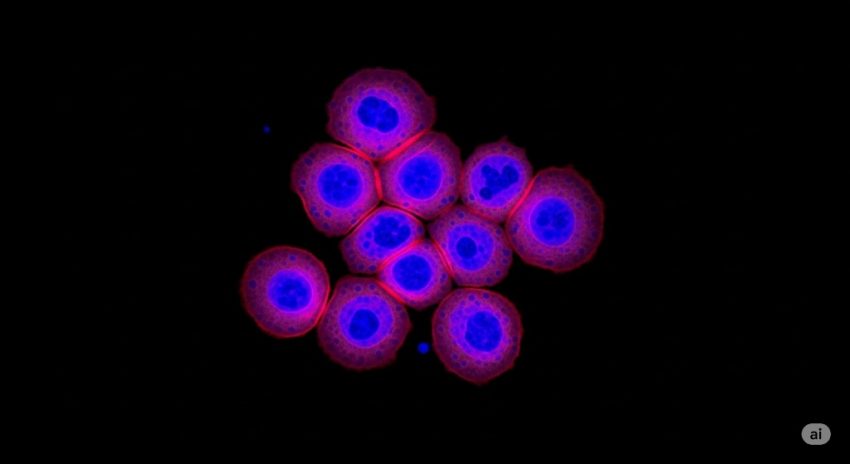The digital pathology sector is experiencing a remarkable transformation driven by technological innovation, AI integration, and evolving healthcare delivery models. Global digital pathology market valued at $1.30B in 2024, reached $1.46B in 2025, and is projected to grow at a robust 13.5% CAGR, hitting $2.75B by 2030. With growing adoption in clinical diagnostics, research, and education, the market is poised for accelerated expansion, particularly as pathology labs shift from traditional microscopy to advanced digital workflows. This transition not only improves diagnostic speed and accuracy but also enables remote collaboration and large-scale image data analytics.
Download PDF Brochure: https://www.marketsandmarkets.com/pdfdownloadNew.asp?id=844&utm_source=reportsnreports.com&utm_medium=referral&utm_campaign=kk31
1. AI-Driven Diagnostic Tools
Artificial intelligence is revolutionizing digital pathology by enabling faster and more accurate disease detection. AI algorithms can process high-resolution whole-slide images (WSIs) to identify subtle patterns that might be overlooked by the human eye. In cancer diagnostics, AI is proving especially valuable in tumor grading, biomarker quantification, and metastasis detection. This reduces diagnostic variability and enhances precision medicine approaches. Beyond diagnostics, AI can also predict disease progression and treatment response, offering a more personalized patient experience. Hospitals and research institutes are increasingly integrating AI-powered platforms into their pathology workflows, allowing for high-throughput analysis of large image datasets. Regulatory bodies are also beginning to approve AI-driven diagnostic systems, which will further boost adoption. While data privacy and standardization remain challenges, the synergy between AI and digital pathology is expected to be a major growth engine over the next decade. As AI models continue to learn from millions of annotated images, their diagnostic accuracy will surpass traditional methods, making them indispensable in both clinical and research environments.
2. Cloud-Based Pathology Platforms
The adoption of cloud computing in digital pathology is enabling unprecedented scalability, flexibility, and remote collaboration. Cloud-based platforms allow pathologists to store, share, and analyze WSIs from any location, breaking geographical barriers for expert consultations. This has been particularly critical in addressing pathologist shortages in rural or underserved regions. Cloud integration also supports seamless interoperability between laboratories, hospitals, and research organizations. Vendors are increasingly offering subscription-based Software-as-a-Service (SaaS) models, reducing the need for large upfront infrastructure investments. With advanced encryption and compliance with HIPAA and GDPR, cloud solutions are becoming more secure, addressing data privacy concerns. Furthermore, cloud storage enables integration with AI analytics, facilitating real-time diagnostic insights and large-scale data mining for research. As 5G networks expand, cloud-based image transfer will become faster and more reliable, further enhancing adoption. The future of cloud in digital pathology also includes blockchain integration for immutable record-keeping and secure multi-institutional collaborations in clinical trials and epidemiological studies.
3. Remote and Telepathology Services
Telepathology—the practice of transmitting pathology data for remote diagnosis—has seen a surge in demand, especially post-pandemic. It enables real-time consultations between pathologists and clinicians, even when they are continents apart. This is a game-changer for regions with limited access to specialized expertise, ensuring timely diagnosis and treatment planning. Modern telepathology solutions offer high-definition streaming of WSIs, synchronized annotations, and interactive case discussions. These platforms are increasingly being used in multidisciplinary tumor boards, where pathologists, oncologists, and radiologists collaborate on patient cases. Telepathology also plays a key role in education and training, allowing medical students and residents to access rare case archives from anywhere. As bandwidth and imaging technologies improve, latency issues are diminishing, enabling smoother real-time collaboration. Regulatory frameworks are adapting to support cross-border telepathology, though licensure and reimbursement policies still vary. The increasing integration of telepathology with AI-assisted tools promises faster turnaround times, improving patient outcomes and hospital efficiency.
4. Integration with Multi-Omics and Personalized Medicine
Digital pathology is evolving beyond image analysis, integrating genomic, proteomic, and metabolomic data to create a more comprehensive view of patient health. This convergence, known as multi-omics integration, is crucial for advancing personalized medicine. By combining tissue morphology with molecular profiles, pathologists can better understand disease mechanisms and identify targeted therapies. For example, in oncology, integrating histopathology with genetic sequencing can help match patients to precision therapies or clinical trials. Pharmaceutical companies are leveraging this approach in drug development, enabling biomarker discovery and predictive modeling for treatment efficacy. Advanced data analytics platforms are making it possible to cross-reference large datasets from pathology images and multi-omics sources in real time. While the complexity of handling multi-modal data remains a challenge, advancements in bioinformatics and cloud computing are streamlining the process. As healthcare moves towards precision medicine, digital pathology will serve as a critical bridge between traditional diagnostics and molecular-level insights.
5. Automation and Robotics in Slide Handling
Automation is transforming the operational efficiency of pathology labs by reducing manual errors and increasing throughput. Robotic slide scanners can digitize hundreds of slides per day, converting them into high-resolution images ready for analysis. Automated slide handling systems also streamline staining, labeling, and quality control processes, ensuring consistency and reproducibility. These systems can be integrated with Laboratory Information Management Systems (LIMS) for seamless workflow tracking and sample management. In high-volume labs, automation drastically reduces turnaround times, enabling pathologists to focus more on complex diagnostic tasks rather than repetitive processes. Robotics are also enhancing biospecimen tracking and storage, ensuring sample integrity over long periods. This trend aligns with the increasing demand for high-throughput pathology services, especially in clinical trials and large-scale research projects. With ongoing advancements in mechatronics and machine vision, the future will see fully autonomous pathology labs where AI, robotics, and digital imaging work in harmony to deliver faster and more accurate diagnostics.

